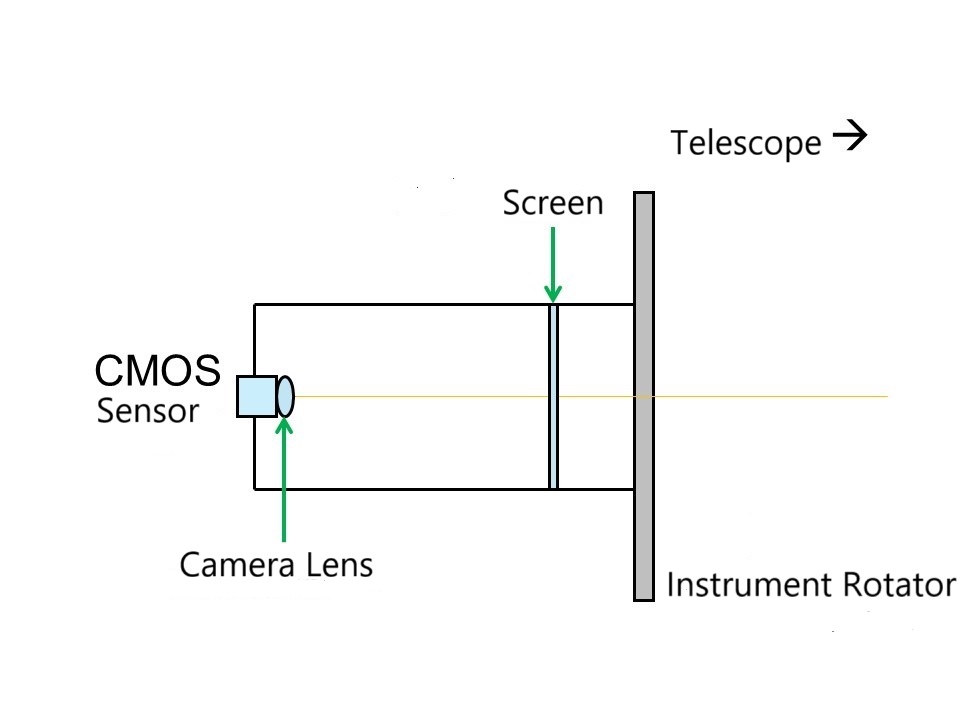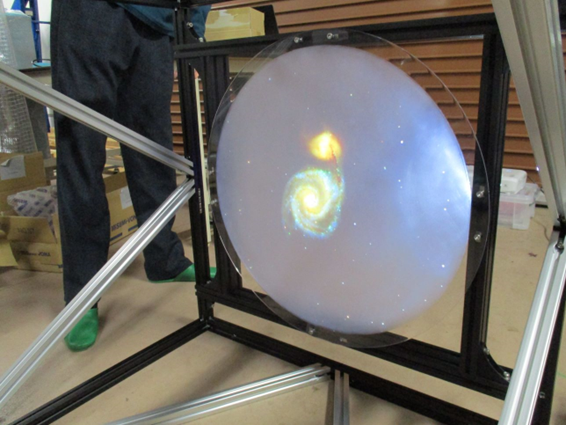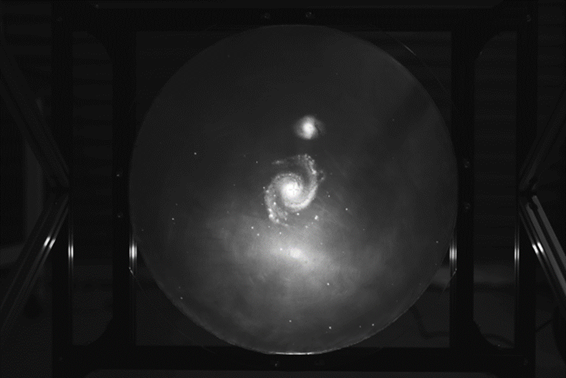
|
TAO Project |
|
The TAO project

|
Development of a Screen camera for optical adjustment of the TelescopeThe optical system of TAO 6.5m Telescope consists of three mirrors. They are the biggest primary mirror of 6.5m diameter, the secondary mirror with a diameter of less than 1m, and the third mirror which folds back the light to the Nasmyth focus. In order to form a clear image of astronomical objects through the telescope, these mirrors must be aligned in the designed position and angle. To give a familiar example, imagine that you try to magnify an object using a magnifying glass in your hand. If the glass position shifts, the object you want to see cannot be seen through the lens, or if the angle of the lens is crooked, the image of the object will be distorted. Conversely, the shifted or distorted image through the lens means that the position or angle of the lens is misaligned, and therefore we can adjust the position or angle of the magnifying glass to see a clear image. We wish we could adjust the telescope mirrors in the same way, but there is one problem. As the area which the TAO telescope makes astronomical images (the focal plane) has a very large diameter of 55cm, it is difficult to capture the entire focal plane at the same time. Although this is possible by providing a huge lens and a large number of CCDs or CMOS sensors, it is not realistic because of the enormous cost involved. Therefore, we thought of placing a light-scattering screen on the focal plane of the telescope and capturing images of astronomical objects projected on the screen with a camera (Fig. 1). This system (Screen camera) can capture the entire field of view of the telescope without big lens or many detectors, and it can be realized with one commercially available camera lens and CMOS sensor set. There is concern that passing the screen will reduce the amount of light and obscure fainter stars, but thanks to the light-gathering power of the telescope, calculations show that up to 13th magnitude stars can be seen, which is enough to adjust the telescope mirrors. Experiments have confirmed that blurring of the celestial image by the screen is small. Thus, we can quickly adjust the rough position and angle of each mirror of the telescope using the screen-camera. Then, precise adjustments are made to each mirror using a detail camera to complete the adjustment of the telescope's mirrors. Fig. 2 shows the overall view of the screen camera produced. The CMOS sensor with camera lens is on the left side, the screen is on the right side, and the further right side connects to the telescope instrument rotator. To visualize what the astronomical image would look like when projected, we used a projector to project an image of the galaxy from behind the screen on a trial basis, as shown in Figure 3. The image of the galaxy was well visible from the camera side and was also captured by CMOS through the camera lens (Fig. 4). We could confirm that this system worked as a screen camera and could be used to adjust the telescope mirrors. After adjustment of the telescope, we will be able to take beautiful images of wide field of view such as Fig. 4. We look forward to taking astronomical images with TAO 6.5m Telescope.
Copyright(c) 2024 TAO Project, Institute of Astronomy, Graduate School of Science, University of Tokyo
|



